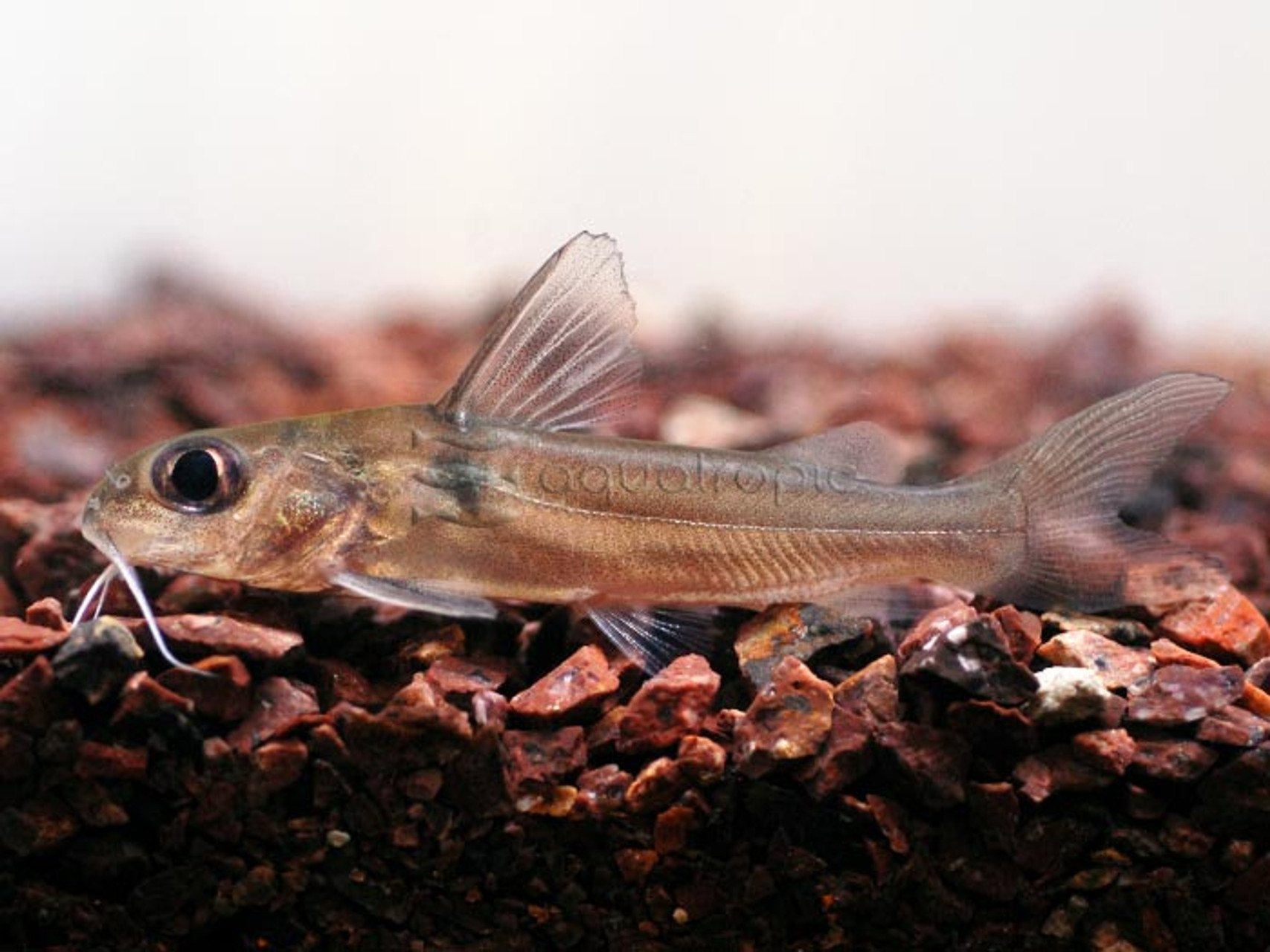Aluminum Catfish (Chrysichthys sp.)

Large catfishes are definitely a niche item in the aquarium trade. Species like the Red Tail Catfish or Tiger Shovelnose Catfish are aquatic monsters best left for those with enormous, pond-sized aquariums. But there’s a catfish out there for everyone, and if you’re looking for a moderately sized species that won’t need hundreds of gallons of water and won’t eat its tankmates, maybe consider the adorable Aluminum Catfish.
Chrysichthys consists of around 40 species, making it by far the largest genus in the recently recognized family Claroteidae (formerly included among the bagrids). This group stands out for the enormous range these species show in their size. The largest, the Kokuni (C. cranchii), occurs in the Congo River and can measure close to 60 inches and weigh nearly 300 pounds. A true river monster of the Afrotropics! And then there are smaller relatives like C. praecox, found recently in the acidic blackwater Lac Mai-Ndombe and measuring in at just 2 inches. That is a startling size disparity for a single genus.
Aquarium specimens from this genus can be challenging to identify correctly to species, but the most common examples are C. ornatus, recognized by its relatively ornate patterning along the sides, and the silvery Aluminum or African Big Eye Catfish, variously given as C. furcatus or C. nigrodigitatus. Fishbase claims these are, in fact, variations of the same species, while other references claim differently. Either way, there are so many similar species in this genus, it can be hard to know exactly what one has without knowledge of the provenance and close examination of the skeletal details.
As an aquarium fish, the Aluminum Catfish typically reaches around one foot in length and can live for ten or more years. As one catfish enthusiast described them, “They are the most modest fish in behavior, always keeping to themselves, rarely swimming around and even then just a tiny bit from spot to spot, usually just laying here and there. They just lay like logs day and night. [They] are easy to feed and are very peaceful. I've always wondered why [Chrysichthys] have such an enormous mouth, fit to wrap around a 1' koi, but never use it... not even on 3" koi and other easy snacks.”
Big and stupid might be one way to describe these, but in a good way. Like a big dog that wants to be everyone’s friend. The mouth is proportionately quite large, especially in adults, and gives the fish a sort of permanent smile. The juveniles are a bit less sluggish and quite handsome, with their silvery colors. This eventually darkens a bit in the adults.
Multiple specimens can be kept together, though there might be the occasional squabble. It helps to provide plenty of hidey holes in the form of PVC pipes, flower pots, or rocky caves. Sinking pellets are an ideal food, along with any other meaty bits that hits the bottom. Variety is always important, but so is not overfeeding. Sluggish catfish are notorious for overindulging themselves to the point of a fatty liver. Remember, an obese fish is not a happy fish.